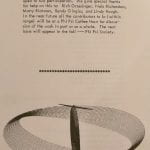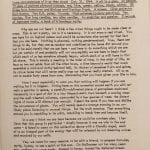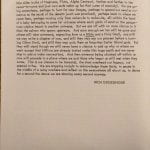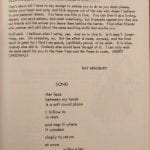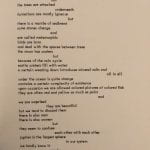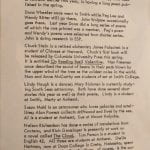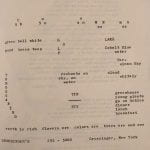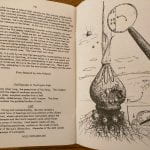OVERVIEW of the corpus:

- An anthology combining poetry and prose into thematic issues, such as “Alchemy,” “Doctrine of Signatures,” and “Burden of Dreams.”
- Themes drew intersections and interplay among literature, mythology, anthropology, natural and physical science, astronomy etc.
- Some issues have multiple versions that enlarge and enrich earlier copies, with new material to contribute to the issue’s themes. Other issues respond to already-covered themes through another lens, approaching them from a different dimension.
Descriptions of Io by its founder and editor, Richard Grossinger ’66:
“A long accumulating poem, or myth, created by those who read it”
“The integrity of the individual pieces is less important than the coherence of the whole”
“dense and continuous, like a long footnote broken by different types of styles and illustrations from old texts”
“The work in a journal like Io can afford to be daffy, extravagant, brilliant, sloppy, in some melange or combination, because it has no authorities to serve, no elders except its own magic”
Mission Statement
Grossinger, Hough, and Richardson recognized that with Io, they wanted to create a magazine that would strongly oppose conventional school literary magazines. They found the reaches of the literary establishment at Amherst stifling:
“The Amherst Literary Magazine was dominated by those who had taught writing at Amherst in recent years: Robert Frost, Rolfe Humphries, and Archibald MacLeish; it was, at the very least, literarily exclusive, but it was also socially elitist and commercially oriented.”
As a result, Io signaled its firm movement away from conventional scholarship by favoring poetry and prose grounded in the context of science, maths, mythology, film, history, and visual arts. Unlike the big and little magazines that preceded it, Io emphasized coherency over individual pieces, passing over polished pieces in favor of those that contributed more holistically to the issue’s main theme. Pieces featured ranged from works in progress and pastiches to an organic capture of wisps of ideas. Io thus distanced itself from its slick literary contemporaries in both appearance and content; it delighted in its own unevenness and flawed hodge-podge of material.
Despite the editors’ encouragement for open contribution, few local writers were interested in contributing to an alternative publication, so the first few issues of Io printed the editors’ own works along with those solicited from their network connections. Io-1 contained material from the four colleges of its editors, but also from Harvard, Columbia, and Bard College. An excerpt of a letter from Ray Bradbury was also included.
Gallery: some excerpts from Io-1
Features (i.e. peculiarities):
- Cover: print block of moth wings, washers, and assortment of debris, surrounding Jupiter and its moon
- rough texture, more a workbook than journal – from leftover menu paper in Grossinger’s print shop
- Sporadically punctuated by black-and-white drawings that resemble hieroglyphs
- Austere, blocky font
- No page numbers
- Advertisements sprinkled throughout, some with Grossinger’s short poems
- Contributors’ note in the middle
Of Moons and Serendipity ← BACK NEXT → Eyes on Io
Overview of Literary Magazines
Of Moons and Serendipity: the conception
Inside Io: mission statement, Io-1
Eyes on Io: the reception
Io after Amherst: post-Amherst transformation
Bibliography
Project by Phuong-Nghi Pham ’18

